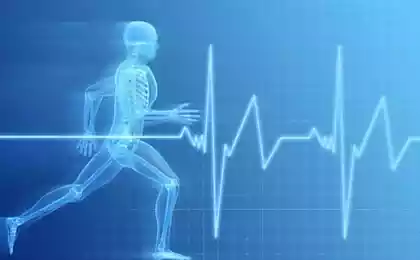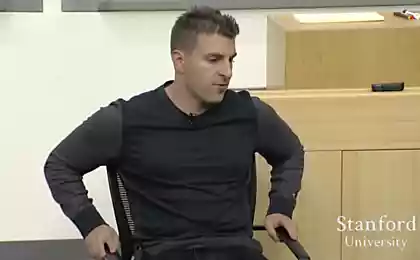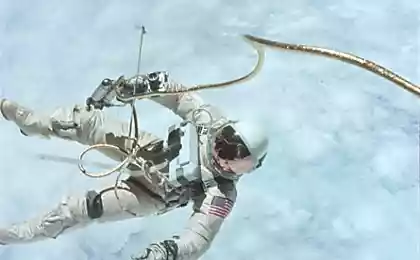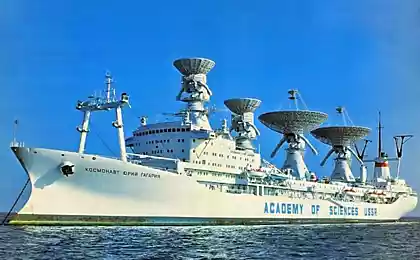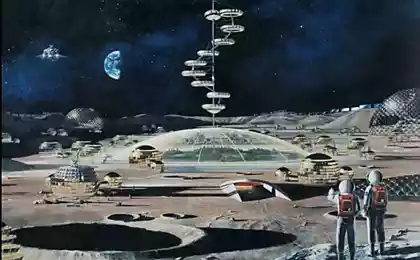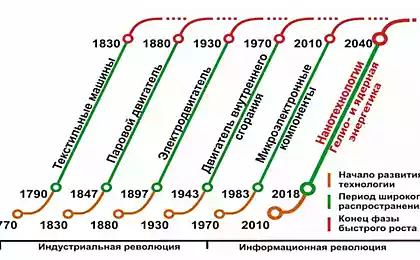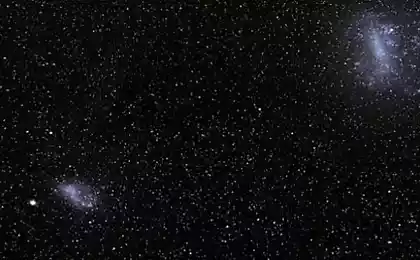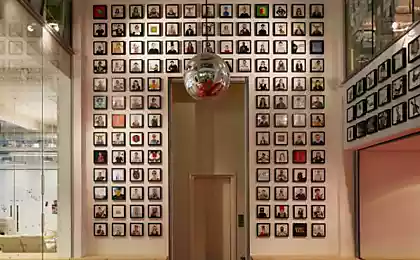1163
10 space innovations that people use every day
Some even the most familiar and mundane things are quite cosmic roots. Thus, the inventive activity NASA goes beyond the "alien" projects. Solutions found in laboratories agencies often are optimal for use in a variety of other areas. In 1976, NASA experts have begun to publish an annual bulletin indicating technologies, whose appearance is somehow related to their research. And that is only there just is not!
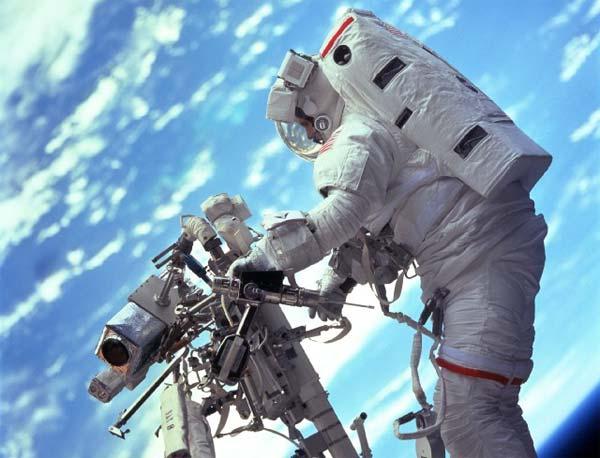
10. Invisible dental braces
They first appeared on the market in 1987, and now they release a variety of firms. They are based - transparent polycrystalline alumina (translucent polycrystalline alumina - TPA), which was originally intended to protect the infrared station antenna tracking missiles with thermal homing system. This development was the result of cooperation between the company Ceradyne and one of a group of researchers NASA.
At the same time, another manufacturer, Unitek, pondering over how to improve the "brace". It was found that TPA is excellent as a base material. Today transparent brackets - one of the most successful products in the dental industry.
9. lenses, scratch-resistant
In 1972, the Office of the Food and Drug Administration has insisted that manufacturers have turned to plastic glasses that was resistant to shock, cheaper, lighter, and finally, it is better absorbed ultraviolet light than glass. There is only the thing: despite the many benefits was one significant disadvantage - scratches. But after some time, the problem was solved through the use of special coatings developed by NASA to protect the surface of space equipment. The use of technology on the lenses make it possible from 10 times more resistant to scratching.
8. Stretch "intelligent" foam
Today, it is used when creating mattresses, foam and this helps a lot to sleep better. And it was originally invented in order to minimize the sensitivity of landings: it trimmed seats in the space korablinh.
In fact it is - a special plastic that is returned to the original form even after a ten-fold compression. Today it is also used in civil aviation, as well as in medicine.
7. Ear thermometer
Such infrared (and, incidentally, "superfast") thermometers appeared in 1991. They are based on technology that NASA used to measure the temperature of stars (but not weak). "Infrared" method used by the Company Diatek, which released the first and a thermometer.
The invention is faster and easier temperature measurement. With that, not only for everyone, but especially for nurses who daily checks the status of dozens of patients and, therefore, spent a lot of time just out to measure the temperature. Now per patient takes a few seconds!
6. Shoes: Insoles
When Neil Armstrong spoke about "a huge step for mankind", he probably would not even know how many values will get this phrase. After a set of costume designed for mission also included special shoes with insoles, reduces pressure on the leg and foot, and "ventilation". In a short time about the same technology have adopted the company producing sports shoes. Thus, in the mid-80s did the company KangaROOS, a little later - AVIA. Well, then, as they say, more.
5. Telecommunications at a distance
Today, the opportunity to talk with the person that is on the other side of the world, we take for granted, though I understand: it was not always. Well, it has become customary benefit can not be associated with only one particular design or a single name. Quest pulls on decades of work and a variety of inventions, in particular those that were made by NASA. This, in particular, the improvement of the satellites.
4. The smoke detector
Adjustable smoke detector with different sensitivity was developed by NASA and Honeywell Corporation for the first US space station: Skylab, which served as the scientific goals from 1973 to 1979.
3. The system of drainage
At first glance, this innovation will not name, but still special narrow grooves on the roads - pieces you need. They are designed to ensure that as soon as possible to remove the water and "dry" street, allowing to increase the friction between the wheels and concrete, making driving safer.
The idea emerged in the '60s and was intended to improve safety during take-off of aircraft on wet runways. When the system is shown to be effective, it began to be used and on motorways. According to NASA, the technology has helped to reduce the number of accidents by 85 percent
2. Wireless Tools
Everything is simple and clear: they initially needed in space, and some of these tools have been developed for the lunar mission Korablin Apollo. While working on them have been resolved, not only questions of "wireless", but also ergonomic energy consumption. So, making a hole in the wall with the punch, it is possible to think about the cosmos.
1. Water filters
Astronauts in space to develop this very useful: it supplies of water are minimal and it should be kept for a long time. So even though the "home" and relatively simple filtration system has been known since the middle of last century, scientists had to "teach" filters purify water in extreme conditions of space. Over time, their findings (using charcoal) were taken by companies for the production of household filters.

10. Invisible dental braces
They first appeared on the market in 1987, and now they release a variety of firms. They are based - transparent polycrystalline alumina (translucent polycrystalline alumina - TPA), which was originally intended to protect the infrared station antenna tracking missiles with thermal homing system. This development was the result of cooperation between the company Ceradyne and one of a group of researchers NASA.
At the same time, another manufacturer, Unitek, pondering over how to improve the "brace". It was found that TPA is excellent as a base material. Today transparent brackets - one of the most successful products in the dental industry.
9. lenses, scratch-resistant
In 1972, the Office of the Food and Drug Administration has insisted that manufacturers have turned to plastic glasses that was resistant to shock, cheaper, lighter, and finally, it is better absorbed ultraviolet light than glass. There is only the thing: despite the many benefits was one significant disadvantage - scratches. But after some time, the problem was solved through the use of special coatings developed by NASA to protect the surface of space equipment. The use of technology on the lenses make it possible from 10 times more resistant to scratching.
8. Stretch "intelligent" foam
Today, it is used when creating mattresses, foam and this helps a lot to sleep better. And it was originally invented in order to minimize the sensitivity of landings: it trimmed seats in the space korablinh.
In fact it is - a special plastic that is returned to the original form even after a ten-fold compression. Today it is also used in civil aviation, as well as in medicine.
7. Ear thermometer
Such infrared (and, incidentally, "superfast") thermometers appeared in 1991. They are based on technology that NASA used to measure the temperature of stars (but not weak). "Infrared" method used by the Company Diatek, which released the first and a thermometer.
The invention is faster and easier temperature measurement. With that, not only for everyone, but especially for nurses who daily checks the status of dozens of patients and, therefore, spent a lot of time just out to measure the temperature. Now per patient takes a few seconds!
6. Shoes: Insoles
When Neil Armstrong spoke about "a huge step for mankind", he probably would not even know how many values will get this phrase. After a set of costume designed for mission also included special shoes with insoles, reduces pressure on the leg and foot, and "ventilation". In a short time about the same technology have adopted the company producing sports shoes. Thus, in the mid-80s did the company KangaROOS, a little later - AVIA. Well, then, as they say, more.
5. Telecommunications at a distance
Today, the opportunity to talk with the person that is on the other side of the world, we take for granted, though I understand: it was not always. Well, it has become customary benefit can not be associated with only one particular design or a single name. Quest pulls on decades of work and a variety of inventions, in particular those that were made by NASA. This, in particular, the improvement of the satellites.
4. The smoke detector
Adjustable smoke detector with different sensitivity was developed by NASA and Honeywell Corporation for the first US space station: Skylab, which served as the scientific goals from 1973 to 1979.
3. The system of drainage
At first glance, this innovation will not name, but still special narrow grooves on the roads - pieces you need. They are designed to ensure that as soon as possible to remove the water and "dry" street, allowing to increase the friction between the wheels and concrete, making driving safer.
The idea emerged in the '60s and was intended to improve safety during take-off of aircraft on wet runways. When the system is shown to be effective, it began to be used and on motorways. According to NASA, the technology has helped to reduce the number of accidents by 85 percent
2. Wireless Tools
Everything is simple and clear: they initially needed in space, and some of these tools have been developed for the lunar mission Korablin Apollo. While working on them have been resolved, not only questions of "wireless", but also ergonomic energy consumption. So, making a hole in the wall with the punch, it is possible to think about the cosmos.
1. Water filters
Astronauts in space to develop this very useful: it supplies of water are minimal and it should be kept for a long time. So even though the "home" and relatively simple filtration system has been known since the middle of last century, scientists had to "teach" filters purify water in extreme conditions of space. Over time, their findings (using charcoal) were taken by companies for the production of household filters.

